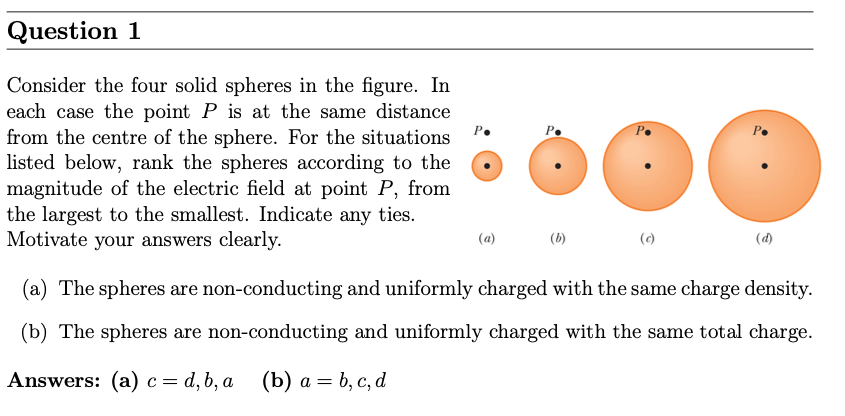Question 1 Consider the four solid spheres in the figure. In each case the point P is at the same distance from the centre of the sphere. For the situations listed below, rank the spheres according to the magnitude of the electric field at point P, from the largest to the smallest. Indicate any ties. Motivate your answers clearly. (a) (c) (d) (a) The spheres are non-conducting and uniformly charged with the same charge density. (b) The spheres are non-conducting and uniformly charged with the same total charge. Answers: (a) c = d, b, a (b) a = b, c, d
